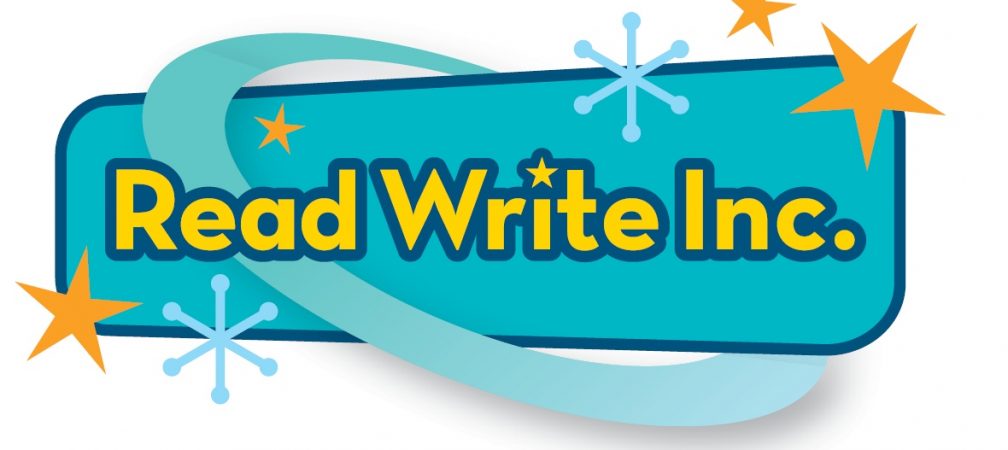Phonics

Right from the beginning of Reception, we use Read Write Inc. Phonics which is a highly successful English programme created by Ruth Miskin. All Reading Teachers at Blessed Mother Teresa's have receive training and support from Ruth Miskin Training, rated Outstanding by the Department for Education, to ensure we meet our aim for all children to become confident and enthusiastic readers.
The Read Write Inc. Phonics programme is carefully matched to the curriculum, giving every child at Blessed Mother Teresa's Catholic Primary the best chance of success.
Reception to Year 2 children are taught using Read Write Inc. Phonics as the main EYFS and KS1 early reading programme but it is also taught as an intervention for children in Years 3.
The five principles of Read Write Inc.
1. Ensure the PURPOSE of every activity is shared with the children, so children know the ONE thing they should be thinking about.
2. Be PASSIONATE about teaching so the children are engaged emotionally.
3. Ensure phonics is taught at an effective PACE so that every moment is devoted to every moment to teaching and learning.
4. Ensure that every child PARTICIPATES throughout the lesson. Partner work is fundamental to learning.
5. PRAISE effort and progress not ability
Set 1 Group A- Set 3 Advanced Group
Set 1 Group A
This set is learning single letter sounds m, a, s, d, t, i, n, p, g, o, c, k, u, b, f, e. We would hope that they have learnt these sounds by October half term
Set 1 Group B
This set is learning the rest of the single letter sounds; l, h, r, j, v, y, w, z, x Again most children will have achieved this by October half term.
Set 1 Group C and short dittys
This set sees the children blending orally. Children should be able to hear the sounds in words and orally blend them together. The children start to learn some digraphs (two letters that make one sound). We call these 'special friends' These sounds are ch, ng, nk, qu, sh, th . The children also start to learn alien words. These are nonsense words that make no sense but the children have to decode and blend the sounds together to say the word.
Set 2 Sounds Group
The children learn some more special friends sounds and trigraphs (three letters that make one sound) in this phase. These are ay, ee, igh, ow, oo, ar, air, ir, ou, oy.
Set 3 Sounds
The remaining special friends should be learnt in this group along with split diagraphs. a-e, ea,i-e,o-e, u-e, oi,ai,oa,aw,ur,er,ire,ear,ure,ew,are,ow
Read Write Inc. Progression Grid
Please see the table below for expected progress term-by-term for Read Write Inc. Phonics in EYFS and KS1.
|
Year Group |
Term |
Expected Progress in RWI. Groups |
|
Reception |
Autumn |
October: know most Set 1 sounds and blend orally (Set 1 B) December: know Set 1 sounds and read words by blending (Set 1 C) |
|
Spring |
February: Ditties April: Red |
|
|
Summer |
May: Green July: Green/Purple |
|
|
Year 1 |
Autumn |
October: Purple December: Pink (know Set 2 sounds) |
|
Spring |
February: Orange April: Yellow |
|
|
Summer |
May: Yellow (know Set 3 sounds) July: Blue |
|
|
Year 2 |
Autumn |
Baseline: Blue October: Blue December: Grey |
|
Spring |
February: Grey April: RWI Spelling and Comprehension |
How can you support your child?
During the academic year, we hold regular parent workshops for early reading. We also have more information on the individual class pages.
Follow the link below to read out parent booklets for more information on RWI Phonics and how you can support your child at home.
Phonics Screening Check
Children in Year1 will have a Phonics Screening Check in the Summer term. The phonics screening check is designed to confirm whether pupils have learnt phonic decoding to an appropriate standard. It will identify pupils who need extra help to improve their decoding skills. The check consists of 20 real words and 20 'nonsense' words that a pupil reads aloud to the teacher. Parents in Year 1 are offered support and help with understanding the test and how they can best they can support their child to do their best.

